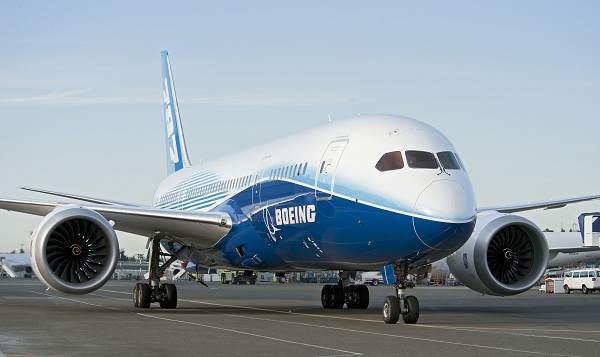A Boeing 787 Dreamliner has made aviation history by completing the first ever transpacific biofuel flight.
The Boeing, operated by All Nippon Airways (ANA), flew between Boeing’s Delivery Center in Everett, Wash., and Tokyo’s Haneda Airport. It was powered by a mix of regular aviation fuel and biofuels, made mainly from used cooking oil.

According to Boeing, the plane emitted an estimated 30 percent less carbon dioxide emissions compared to similarly sized airplanes using conventional jet fuel.
Boeing said the reduction in emissions was helped in large part by technological improvements in the Dreamliner. Of the reduction in greenhouse gasses, the aircraft maker said about 10 percent could be put down to the use of biofuels and around 20 percent to efficiency advances on the plane itself.
Boeing said the flight showed how innovations in technology were helping to bring to realization the airline industry’s goal of carbon-neutral growth beyond 2020.
“The 787 is the most environmentally progressive jetliner flying today, combining fuel efficiency and comfort with reduced carbon emissions,” Billy Glover, Boeing’s vice president of environment and aviation policy said in a statement.
This transpacific trip is the latest in a series of biofuel flights that have occurred in recent years. Aviation regulators approved the use of biofuels last summer. Shortly after, the first commercial plane to run on biofuels was operated by the Dutch carrier KLM. The airline used a green fuel blend—a 50-50 mix of traditional jet fuel and biofuel—carrying more than 170 passengers on a Boeing 737-800 on a route from Amsterdam to Paris in June.
Since then U.S. carriers have got in on the act. Continental operated a flight from Houston to Chicago in November powered by the first 100 percent algae-derived jet fuel (blended with 60 percent conventional jet fuel).
The change to greener fuels has been prompted in part by rising oil prices. Commercial airlines are also under increased pressure to reduce their carbon footprint. A new EU law that took effect in January makes it obligatory for airlines flying in and out of Europe to purchase carbon permits to offset their emissions. Meanwhile, the industry body the International Air Transport Association’s (IATA) has imposed goals to reach CO2-neutral growth by 2020 and achieve a 50 per cent reduction in CO2 emissions from 2005 levels by 2050.
Made primarily from composite materials, the Boeing 787 Dreamliner is the first mid-size airplane capable of flying long-range routes. Boeing recently put aside commercial rivalries and signed an agreement with two other major aircraft makers promising to work together with governments and biofuel producers to promote and speed up the availability of jet fuels that reduce carbon emissions.
Boeing alongside Airbus and the Brazilian aircraft maker Embraer signed the agreement in Geneva at the Air Transport Action Group (ATAG) Aviation and Environment Summit. The memorandum of understanding was signed by the CEOs of Airbus and Boeing and by the head of Embraer’s commercial aviation arm.






